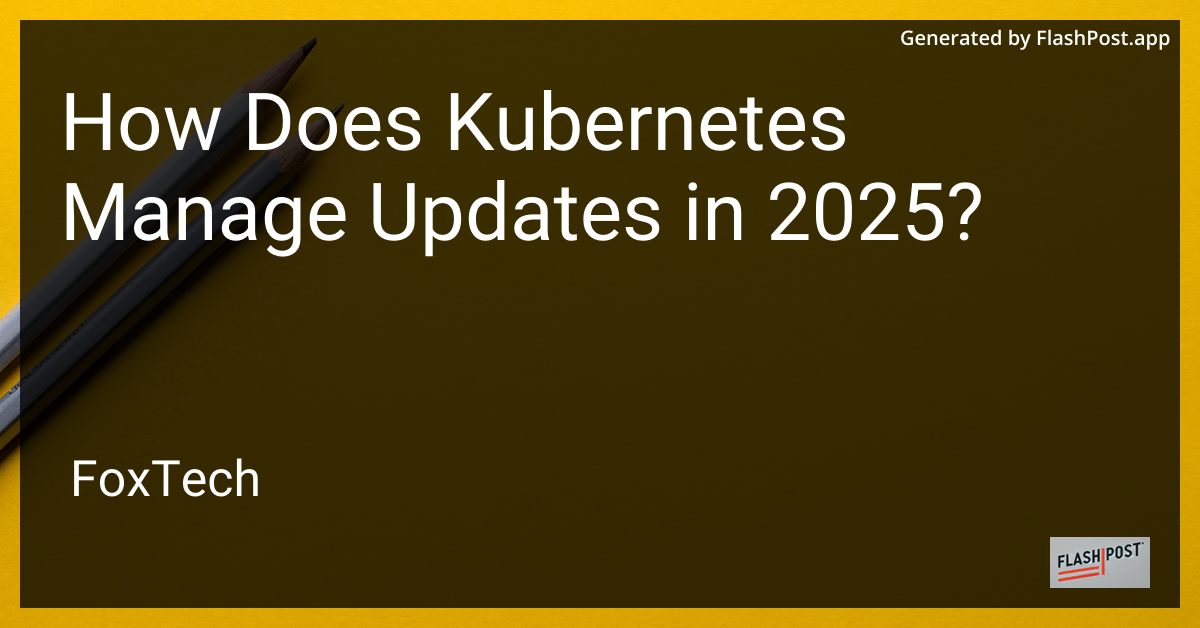
In the rapidly evolving landscape of container orchestration, Kubernetes has solidified its place as an essential tool for managing containerized applications. As we look to the future, Kubernetes continues to adapt and innovate, especially in how it handles updates—a critical aspect for maintaining system stability and performance. In 2025, Kubernetes offers cutting-edge solutions for managing updates seamlessly. This article will delve into how Kubernetes manages updates, ensuring minimal downtime and optimal performance.
Understanding the Update Strategy
Kubernetes employs various strategies to manage updates, ensuring that applications continue to run smoothly despite changes. These strategies include:
-
Rolling Updates: The rolling update strategy is fundamental in Kubernetes. It allows for updates to be rolled out gradually rather than all at once. By updating pods incrementally, Kubernetes ensures that there is always a set of running pods to handle requests, thereby minimizing downtime.
-
Canary Deployments: This strategy involves rolling out updates to a small subset of users first. It helps in identifying issues with the update in a controlled environment. After the initial feedback, the update can be rolled out to the rest of the users.
-
Blue-Green Deployments: This approach involves running two environments, Blue and Green. One is the live environment, while the other is used for testing new updates. Once the updates in the Green environment are tested and validated, traffic is directed away from Blue to Green, making it the live environment.
Automation and CI/CD Integration
In 2025, Kubernetes integrates seamlessly with CI/CD pipelines, automating the update process. Automation tools and operators manage complex update paths with:
-
Kustomize and Helm: These tools help in maintaining and managing Kubernetes configurations efficiently. They enable dynamic updates without manual intervention, thus making the update process more reliable.
-
GitOps: By using Git as the single source of truth, GitOps enables faster deployment cycles and makes tracking updates easier. It ensures entire configurations are versioned and auditable.
-
Operators: Custom operators provide domain-specific expertise to automate updates across infrastructure and applications. They run in Kubernetes and handle complex update scenarios with minimal human oversight.
Zero-Downtime Upgrades
By 2025, zero-downtime upgrades have become a reality in Kubernetes through advanced strategies and tools. Techniques like PodDisruptionBudgets and PriorityClasses ensure essential workloads remain uninterrupted during updates.
-
PodDisruptionBudget: This tool prevents too many pods from being disrupted during voluntary disruptions like updates, maintaining application availability.
-
PriorityClasses: By assigning priorities to different classes of workloads, Kubernetes makes sure critical applications are less likely to be disrupted during an update.
Networking and the Future
Kubernetes networking in 2025 is more robust and flexible (learn more about Kubernetes networking), allowing for seamless updates without network interruptions. The integration of advanced service meshes ensures that network traffic is managed effectively even during active updates.
Real-Time Monitoring and Feedback
Real-time monitoring tools are intrinsic to Kubernetes in 2025. Tools like Prometheus and Grafana provide insights into performance and potential issues during updates, enabling teams to respond proactively.
Conclusion
As Kubernetes continues to evolve, its ability to manage updates efficiently becomes increasingly sophisticated. The strategies and tools in 2025 ensure that Kubernetes remains a leader in container orchestration, offering unparalleled support for seamless updates. Whether you're deploying a Node.js application on a Kubernetes cluster or setting up a WordPress site, Kubernetes' update management is crucial for maintaining the reliability and performance of your applications.
By staying updated with the latest best practices in Kubernetes, developers and businesses can ensure smooth and efficient operations, paving the way for innovative solutions and applications in the realm of cloud-native technologies.